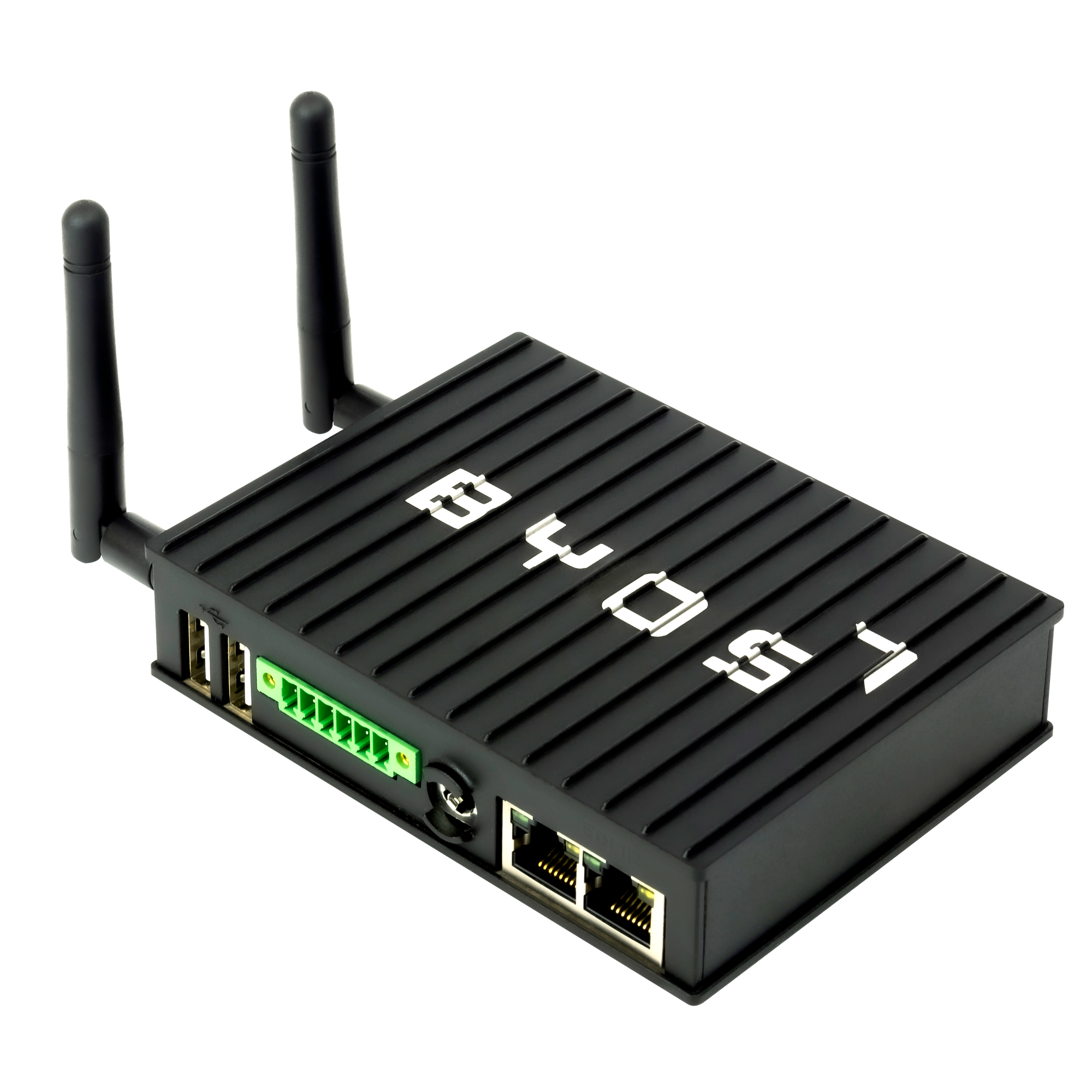A Product Overview of the Byos Secure Gateway Edge

One Liner
A plug-and-play, Industrial gateway form factor, providing secure connectivity for OT, IoT and IT devices as well as legacy infrastructure.
What does it do?
It makes endpoints invisible on the network through microsegmentation. It physically isolates and protects endpoints from the local network and provides traffic route enforcement.
What problem does it solve?
- It eliminates exposure of unpatched legacy networked devices to internal threats like lateral movement and ransomware, reducing the risk of a severe security incident.
- Helps make remote management more efficient and secure, streamlining operations and saving money on on-site field service & maintenance scheduling
- Helps ICS network owners reduce risk and increase control over 3rd party access
Why was it created?
- Securely prolong the life of OT infrastructure running legacy applications and unsupported OS that are not ready to be retired.
- Connected previously air-gapped devices to the network for more efficient and secure remote maintenance and monitoring.
What are some main differentiating features?
- Non-intrusive deployment to existing network configurations, without having to expose internal devices to the internet.
- Eliminate the use of insecure public static IP addresses for remote access that add exposure risk to the entire corporate network.
- It's plug-and-play, working with any TCP/IP device regardless of age, with nothing to install on the endpoint, making UX simple.
What industries does it serve?
- Manufacturing, Critical Infrastructure, Food&Beverage: Controllers, production equipment, etc.
- Energy/Oil & Gas: refineries, oil fields/rigs, pipelines, etc.
- Healthcare: hospitals, clinics, research facilities
- Retail: Refrigeration and HVAC
- FinTech: POS, ATMs, etc.
What endpoints is it used with?
- ICS endpoints: PLCs, RTUs, HMIs, Industrial PCs, Robotics
- Medical Devices:
- connected injection devices
- hospital terminals at nursing workstations
- Patient telemetry devices
- stationary imaging devices, etc.
- Legacy infrastructure: servers, workstations, etc.
Technical Specifications
Network
LAN
- 1x - 1000Mbps Ethernet port
- 1x - 100Mbps Ethernet port
Wi-Fi
- 802.11ax Wi-Fi Interface
Reliability and Environmental
- MTTF - > 200,000 hours
- Operation Temperature
- Commercial: 0° to 60° C
- Extended: -20° to 60° C
- Industrial: -40° to 80° C
- Storage Temperature - 40° to 85° C
- Relative Humidity
- 10% to 90% (operation)
- 05% to 95% (storage)
Mechanical Specifications
- Dimensions - 112 x 84 x 25 mm
- Enclosure Material - Aluminum
- Cooling - Passive, fanless design
- Weight - 450 grams
Compliance
- Regulatory - CE, FCC
- EMC - EN 55032/5, EN 61000-6-2, EN 61000-6-3
- Safety - EN/UL/IEC 62368-1
Electrical Specifications
- Supply Voltage - Unregulated 8V to 36V
- Power Consumption - 2W - 7W
FAQ
How is edge micro-segmentation different from standard network segmentation (using Firewalls and VLANs)?
- No single point of attack/control/failure - Byos edge micro-segments are finite in the number of endpoints residing in each, often 1-to-1 up to a maximum of 7, and all operate independently of each other.
- Physical isolation vs. logical isolation - reducing dependence on the endpoint in case of corruption/infection.
- Simplified changes to topologies and configurations - nothing to install on the endpoint, and no changes needed on the network.
- More granular control able to isolate endpoints from the internet (while maintaining control) to remediate issues, as well as different policies across different microsegments.
- Secure Lobby™ - We facilitate secure remote diagnostics and maintenance to identify, prevent, and recover from abnormal operations or failures, without exposing the network or degrading it’s security.
